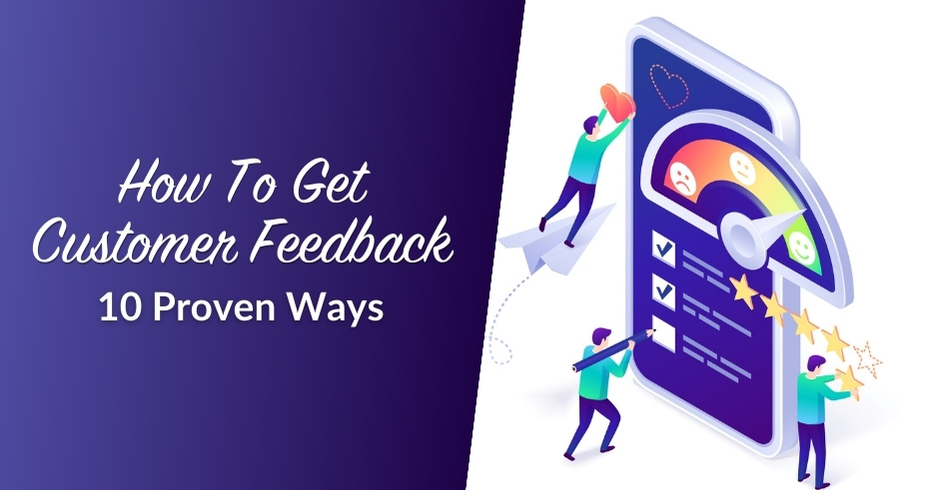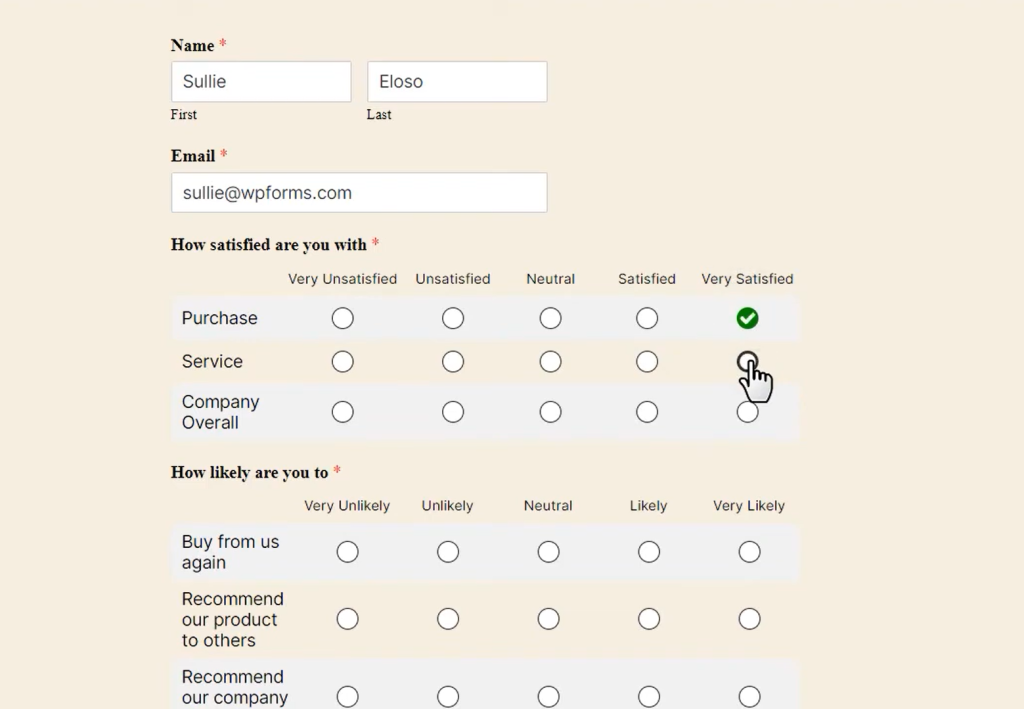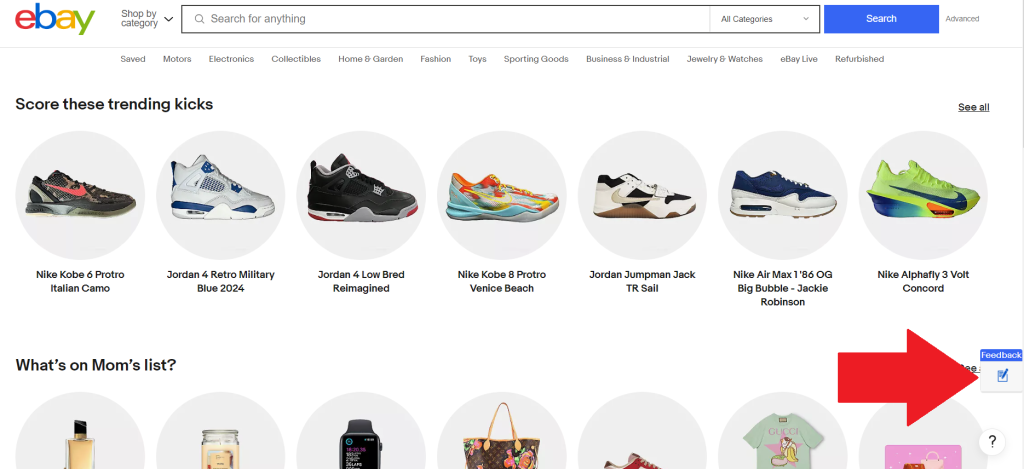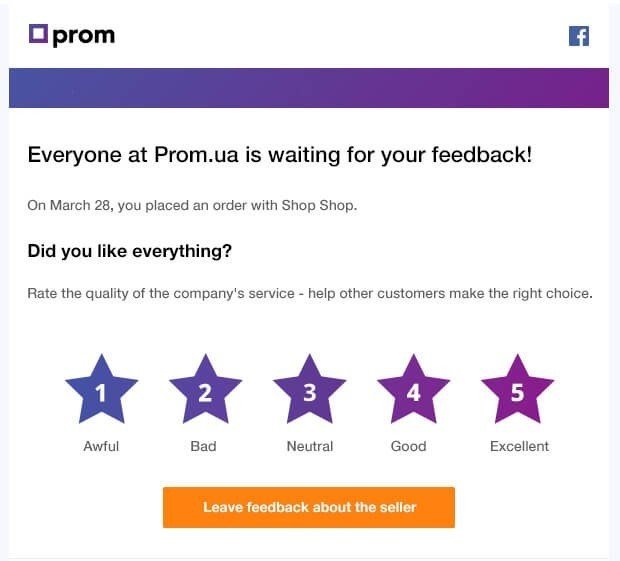
The key to the long-term success of any business is ensuring customer satisfaction at every stage of the purchase journey. And yet, it’s difficult to pinpoint where to begin. With so many aspects to improve, business owners are often unsure which direction to take. Learning how to get customer feedback can help you bridge this gap.
By listening to your customers, you gain invaluable insights into their needs, preferences, and pain points. This provides a solid foundation to help you build tailored solutions and experiences. Most importantly, it serves as a roadmap for improvement, guiding your efforts to meet (and exceed) customer expectations.
We’re here to help you do just that! In this article, we explore what customer feedback is, and its importance, and provide actionable steps on how to get customer feedback.
Understanding Customer Feedback
Customer feedback encompasses all the insights provided by your customers regarding their experience with your business. These may be reviews, opinions, or reactions about your products or services, or even about your current processes.
Why learn how to get customer feedback?
Collecting customer feedback offers several benefits for your business. It helps:
- Measure customer satisfaction: The goal is to keep customers satisfied. Receiving positive feedback indicates that customers are pleased with their experience with your business. Negative feedback indicates otherwise, allowing you to pinpoint areas for improvement.
- Gives clear insights about what your customers need: Additionally, feedback can reveal your market’s pain points and needs. By learning about this, you can tailor your offerings to meet their expectations.
- Guides your decision-making: In what areas should your business improve? Customer feedback can hold the answer, revealing what your customer base needs the most. This can help inform your marketing strategies and product development efforts.
10 Effective Ways On How To Get Customer Feedback
Today’s digital-driven landscape provides you with countless ways to gather customer feedback. From online forms to social media listening (more on these methods later), the avenues are virtually limitless!
However, before setting up that form or sending a customer email, you’ll need to get clear on your objectives first. What insights are you aiming to gain? For example, are you looking to measure customer satisfaction, or gather feedback about the new product lines you just released? Defining your objectives from the outset can help inform your strategy and ensure the insights you gain will be relevant for you.
So, with that in mind, let’s look into the best ways on how to get customer feedback!
1. Utilize online surveys
One of the simplest and most effective ways on how to get customer feedback is by leveraging online surveys. It’s easy to implement using tools like Google Forms or WPForms, if you’re running a WordPress website.

With the countless ways you can customize survey forms, it’s easy to go overboard. However, make sure to strike the right balance-clearly define your objectives from the beginning and only include the most relevant questions. This will help avoid overwhelming your client with a long survey form.
2. Send email feedback requests
Emails are powerful because they serve as a direct line to your customers. It’s no wonder they’re also amazing tools for collecting customer feedback. To capture your customer’s attention and encourage replies, make sure you clearly explain the purpose of the email and the specific type of feedback you’re seeking. For example, you can:
- Ask for input on a recent purchase
- Gather suggestions for product improvements
- Request feedback on the checkout process and overall shopping experience
- Gather opinions on overall website usability and navigation
- Asking for feedback on packaging, shipping, and delivery experiences
You can further motivate customers to participate by offering incentives or rewards for their input, such as exclusive discounts, coupons, or entry into a prize draw.
3. Use live chat software
Do you have a live chat support software installed on your business’s website? You can use this software for more than a live helpdesk for your customers. This software can be of great help in getting feedback from your clients.
For instance, you can use your live chat support to open a discussion on what your clients would like to see either added or changed on the various products and services you offer. Not only would you be using your business website for marketing and increasing your sales, but it also allows you to have a direct contact with your customers to get their feedback.
4. Conduct customer interviews
Customer interviews are invaluable-they allow you to deep-dive into the needs and pain points of your customers. Typically, this method entails engaging in one-on-one conversations with selected customers. This can also be done on a slightly bigger scale through focus group discussions.
As with all the other strategies in this guide, it’s crucial to define your objectives before conducting interviews. For instance, are you hoping to get feedback on a new product line? Or do you want to explore your customer’s pain points? After identifying your objectives, you can then select the right customers to seek input from.
Avoid leading questions and focus on open-ended queries that allow your customers to share their experiences in-depth. You can conduct these interviews via phone call, video conferencing, or even face-to-face, depending on your available resources.
5. Monitor social media
When learning how to get customer feedback, you shouldn’t miss out on social media listening. Today’s customers use social media to voice out unfiltered opinions about their purchase experiences. This type of unsolicited feedback is valuable in helping you understand how customers perceive your business and what issues they are experiencing.

You can leverage various marketing tools like HootSuite and Sprout Social to track mentions of your brand throughout different social media platforms. By keeping track of what your customers say on social media, you can spot any potential concerns and resolve them before they escalate.
6. Offer customer feedback forms on your website
Adding a dedicated customer feedback form, along with a feedback email address is another effective way to gather customer insights. To ensure customers can access it, include this information in your website navigation seamlessly. For instance, you can add it to your main menus, or display customer feedback email prominently on your website’s footer.
Take a look at the example below:

Ebay automatically adds a feedback button on the right side of the website, allowing customers to provide immediate feedback about their experience with the site’s homepage.
By letting your clients know they can voice out their concerns, you can foster trust and build a solid brand reputation. Of course, you’ll also need to respond to the feedback and make the necessary improvements to ensure customer satisfaction.
Another brilliant way to ask for customer feedback is by implementing it right into the registration process. For example, plugins like Wholesale Lead Capture allow you to customize B2B registration form fields, letting you add text fields to gain feedback about your store’s onboarding process.
7. Ask for feedback post-purchase
Your customers are likely more engaged right after buying from your store. This presents a good opportunity to gather feedback about their order experience. Consider sending an automated email after a customer purchases from your store, or leveraging opt-ins to pop up after a successful order.

Make things enticing by offering an incentive for their feedback. For example, you can reward them with a discount on their next purchase in exchange for their insights.
8. Analyze customer service interactions
Customer service conversations also provide a wealth of information about your customer’s pain points and satisfaction levels. By analyzing this information, you can identify recurring issues, trends, or opportunities for improvement.
To implement this strategy, schedule regular reviews of your customer support tickets, emails, or chat transcripts. Then, pay attention to any recurring themes or common customer frustrations. Modern customer feedback software can help you sort feedback into categories such as product issues, service inquiries, billing concerns, and more to help you prioritize issues.
Another smart way on how to get customer feedback is by integrating feedback collection tools directly into customer service interactions. For example, you can send automated emails upon issue resolution to measure the effectiveness of your customer service efforts. Likewise, using a tool like Heroic KB, you can provide a quick and convenient way for visitors to interact with your knowledge base anywhere on your site, making it easier for them to find answers and share their feedback.
9. Leverage website analytics
Another amazing way on how to get customer feedback is by analyzing your website analytics. Your customer’s behavior while browsing your website can help you optimize their user experience. Website traffic, engagement metrics, and conversion rates are some analytics you can look into.
Tools like Google Analytics can give valuable insights into user behavior, including bounce rates, page views, or time spent on your website. Here are some excellent strategies you can try:
- Look into the most popular content on your website: This can reveal the topics, features, or formats that resonate most with your audience.
- Analyze site search queries: On the other hand, this information can reveal content gaps. For instance, what are customers searching for, or struggling to find information with?
- Conduct A/B tests: Also consider conducting testing for different elements on your website and analyze how they affect engagement, conversions, or user satisfaction.
10. Create an online community
This strategy takes how to get customer feedback a step further. By creating a dedicated online community for your customers, you can encourage them to engage and share their experiences with your brand. It also fosters a sense of belonging, allowing you to gather insights and suggestions right from the members of your community.
The first step is choosing the right platform. Some popular options you can look into are Facebook Groups, LinkedIn Groups, or Discourse. Then, once you’ve chosen your platform, make sure to define clear guidelines and rules for community participation. This will help you create a safe and respectful space where your community can share their experiences. Likewise, consider creating dedicated threads or channels for different categories and topics to stay organized.
By nurturing a vibrant online community, you can engage with your members directly and strengthen your relationships with customers.
Conclusion
Gathering customer feedback is crucial for your business, as it gives valuable insights regarding the needs, pain points, and preferences of your valued customers. After all, the goal is always to ensure their satisfaction. In this helpful guide on how to get customer feedback, we explored ten key strategies to help you collect insights from your customers.
To summarize, let’s review them below:
- Utilize online surveys
- Send email feedback requests
- Leverage live chat
- Conduct customer interviews
- Monitor social media
- Offer customer feedback forms on your website
- Ask for post-purchase feedback
- Analyze customer service interactions
- Use website analytics
- Create an online community
So, do you have any questions on how to get customer feedback? Let us know in the comments section below!




